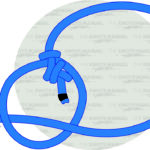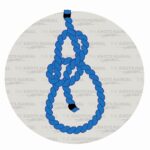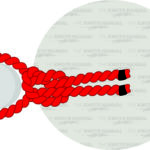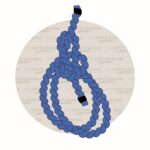The Running Bowline knot features an easily adjustable noose that’s useful in a variety of settings.
It’s used in boating to retrieve lumber, in hunting to lower items from a treestand, in climbing to retrieve items from crevasses, and at home to hang clotheslines or children’s swings.
Quick Guide: How to Tie a Running Bowline Knot
To tie a bowline knot, double the end of your rope, wrap the tag end over and under the standing line, and then up toward the top side where you’ve created the new loop.
Twist a small loop on the side of the big loop you created and feed the tag end through the small loop.
Wrap the tag end through and around the end of the main loop and then back down through the smaller loop. Finally, pull the tag end tight. You’ll now have a fixed loop through which you can thread your main line.
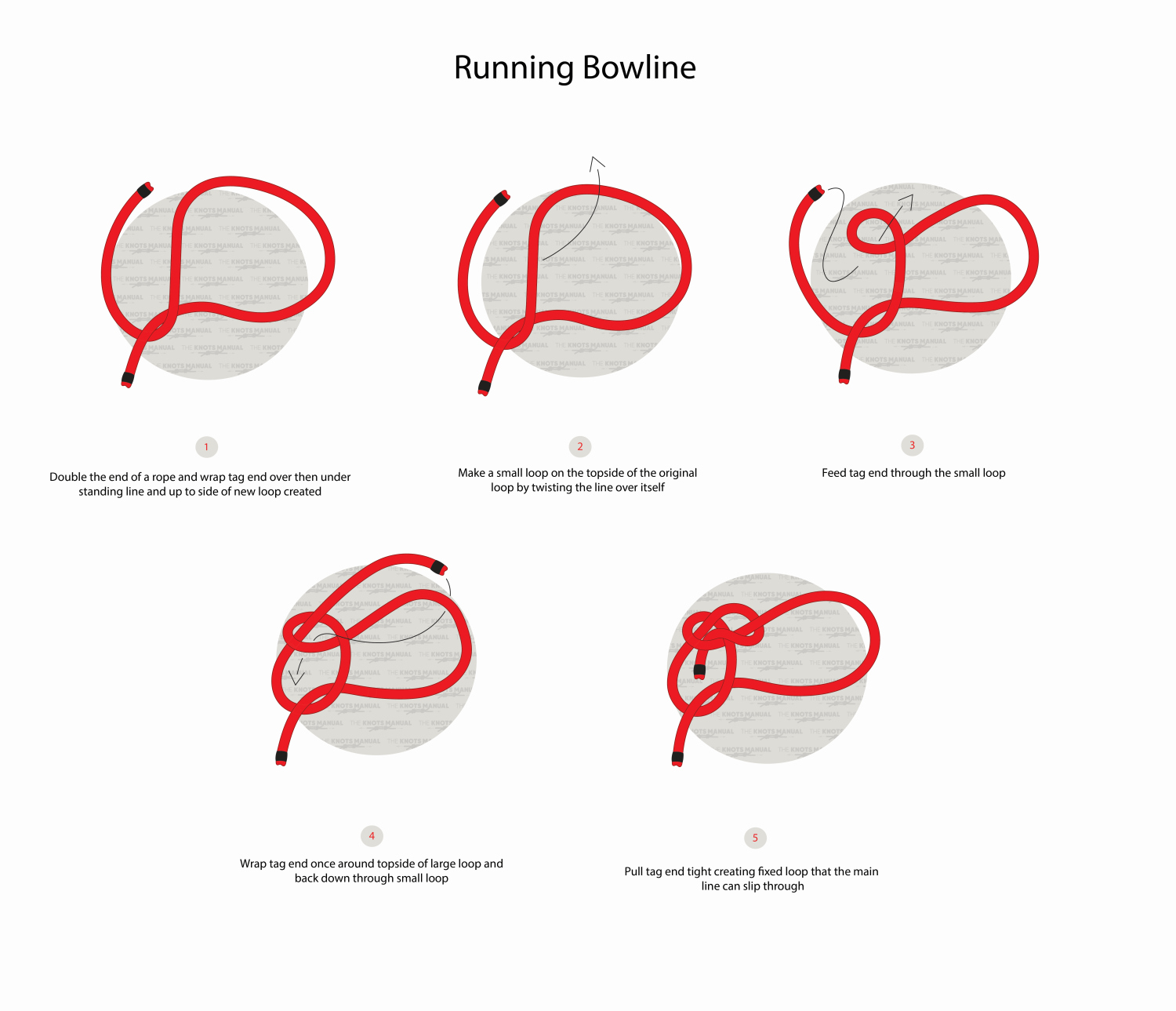
The Pros and Cons of the Running Bowline Knot
Aside from its versatility, a big advantage of the running bowline is that it won’t close up or bind on the bitter end. You can place the open loop directly on items (or even throw the loop like a lasso) and then pull to grip your load. The running bowline is easy to undo when the knot isn’t under tension.
A disadvantage to the bowline knot is that it can loosen when used repeatedly and for various-sized loads. It also tends to slip when pulled sideways.
Knots Similar to the Running Bowline
Bowline Knot—This is the most popular knot for creating a loop at the end of a rope and what the running bowline is based on. The difference between the bowline and running bowline knots is that the bowline creates a fixed loop, and the running bowline creates an adjustable loop.
Double Dragon Loop—Use this knot to make a loop at the middle or end of a rope. This easy-to-tie knot is very secure and works for many of the same applications as the bowline or running bowline knot.
Slippery Figure Eight Loop—The Slippery Figure Eight loop is based on the figure eight knot, but it creates an adjustable loop at the end of the rope.
Honda Knot (Lasso)—The Honda Knot creates a fixed loop in ropes. Slipping the rope’s bitter end through the Honda Knot turns it into a slip knot or lasso.
Noose Knot—The Noose Knot features a self-tightening loop for use in snares and traps.
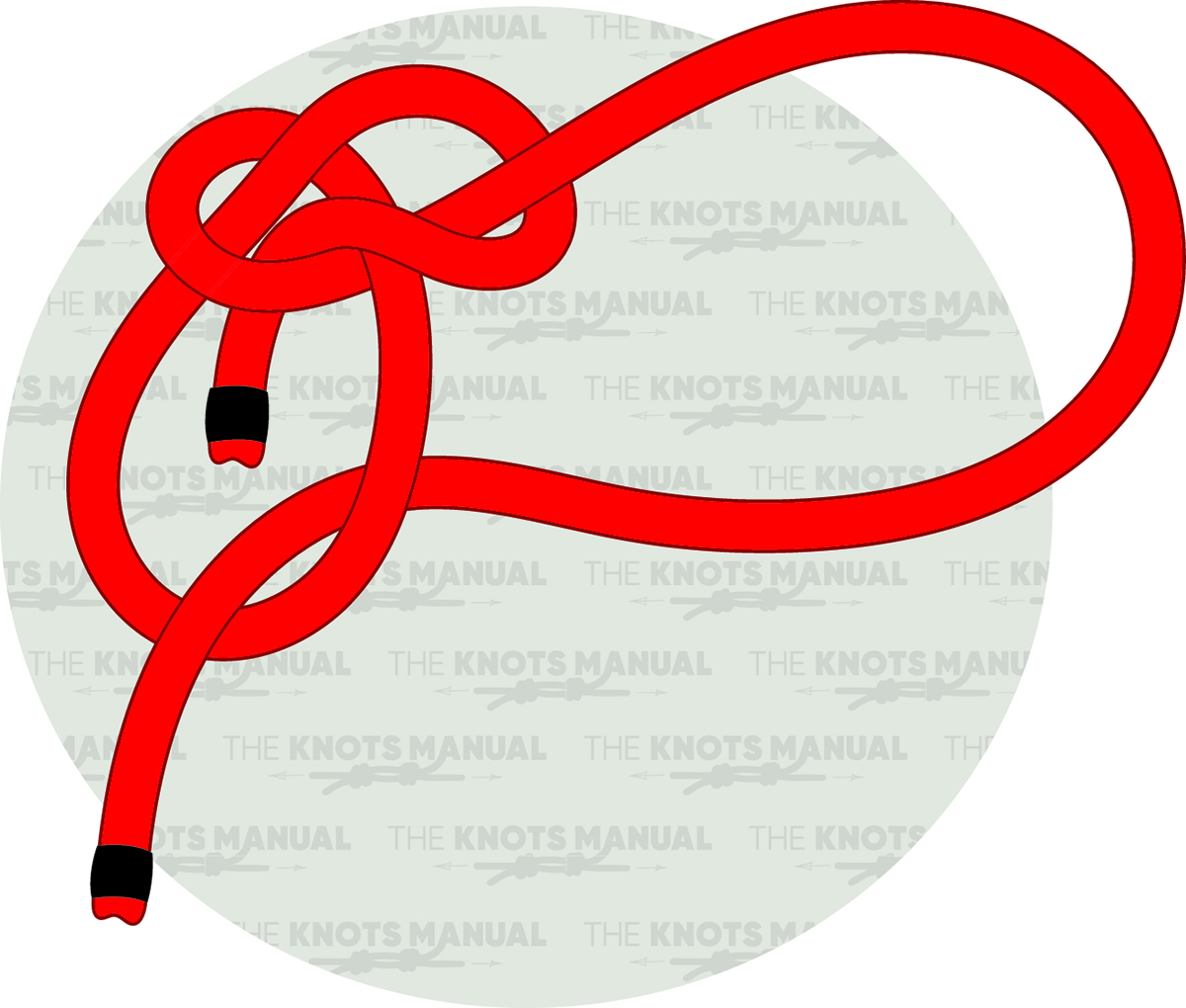
Step 1:
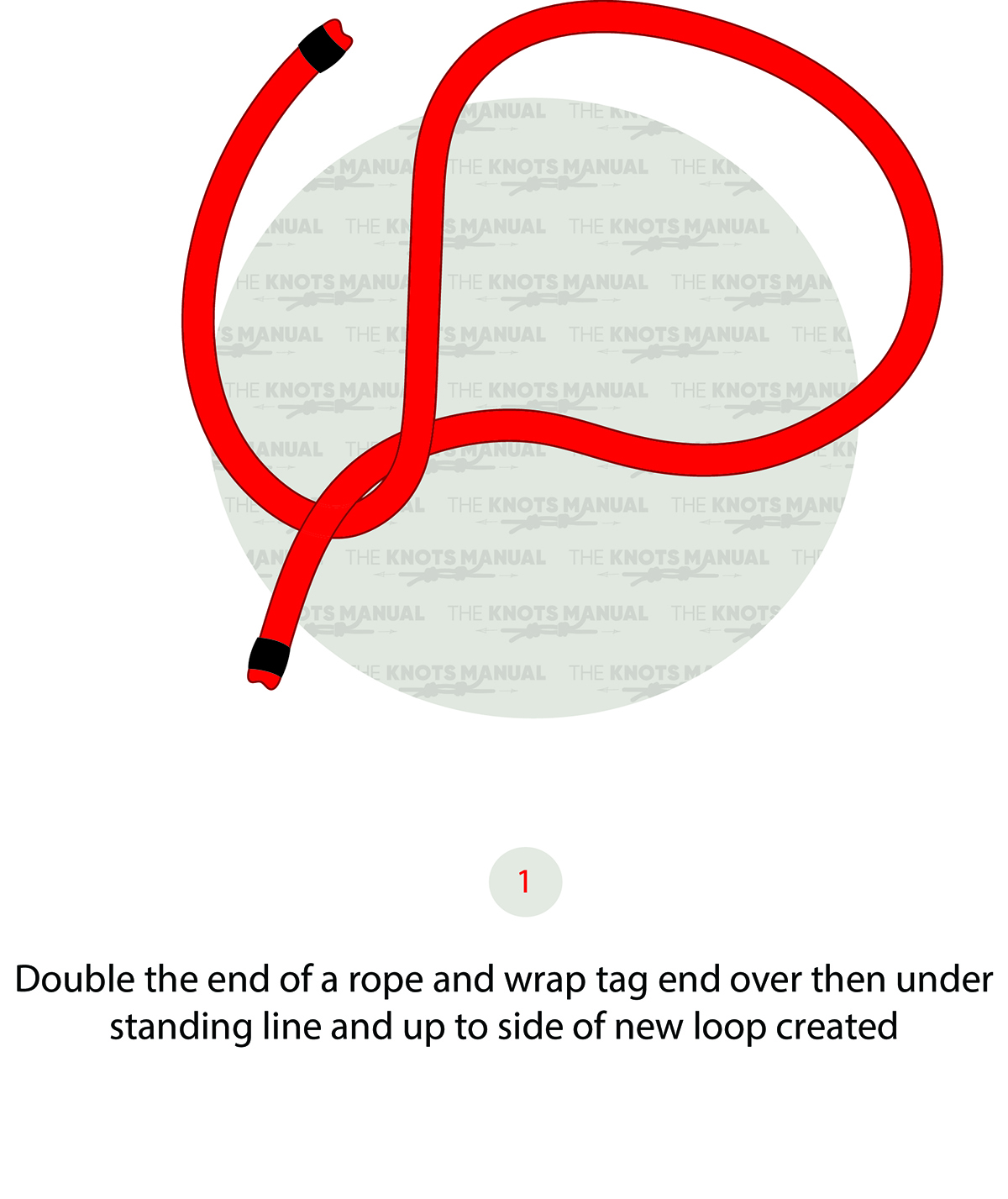
Double the end of the rope. Then, wrap the tag end over and under the standing line, bringing it back toward the top of the loop.
Step 2:
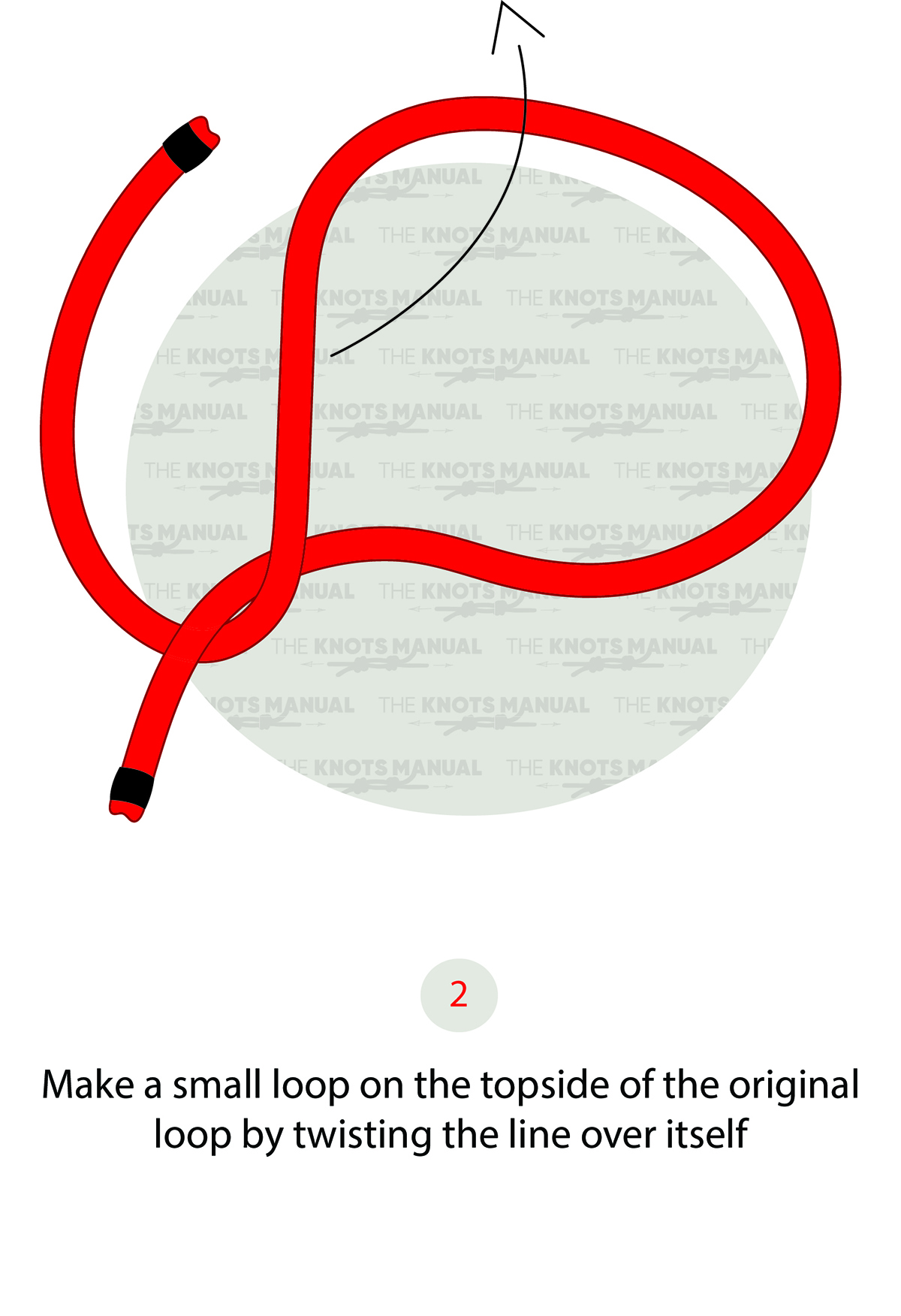
Twist the line over itself to create a second small loop on the side of the large loop.
Step 3:
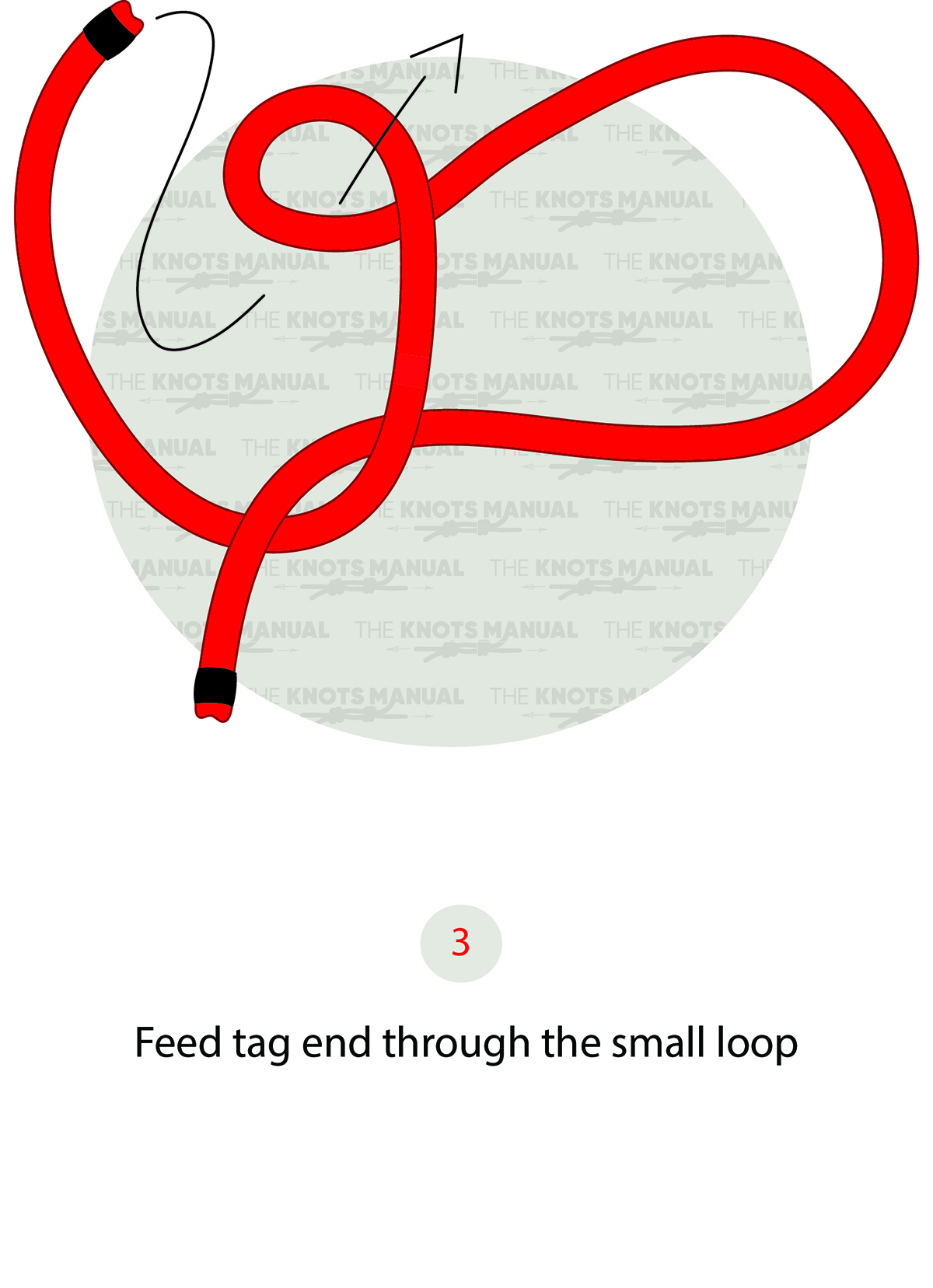
Thread the tag end of the rope through the small loop.
Step 4:
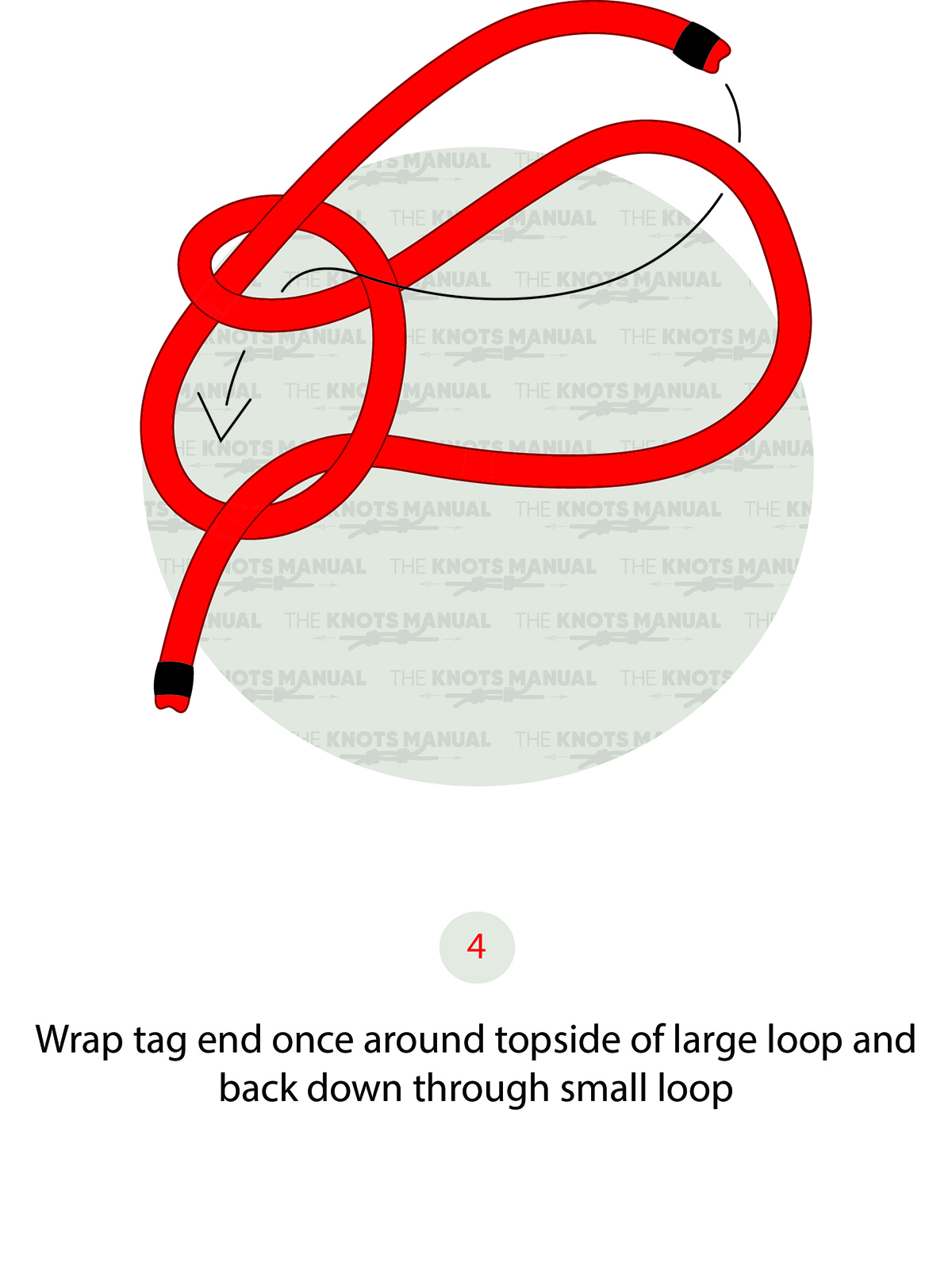
Wind the tag end around the topside of the large loop and then feed it through the small loop.
Step 5:
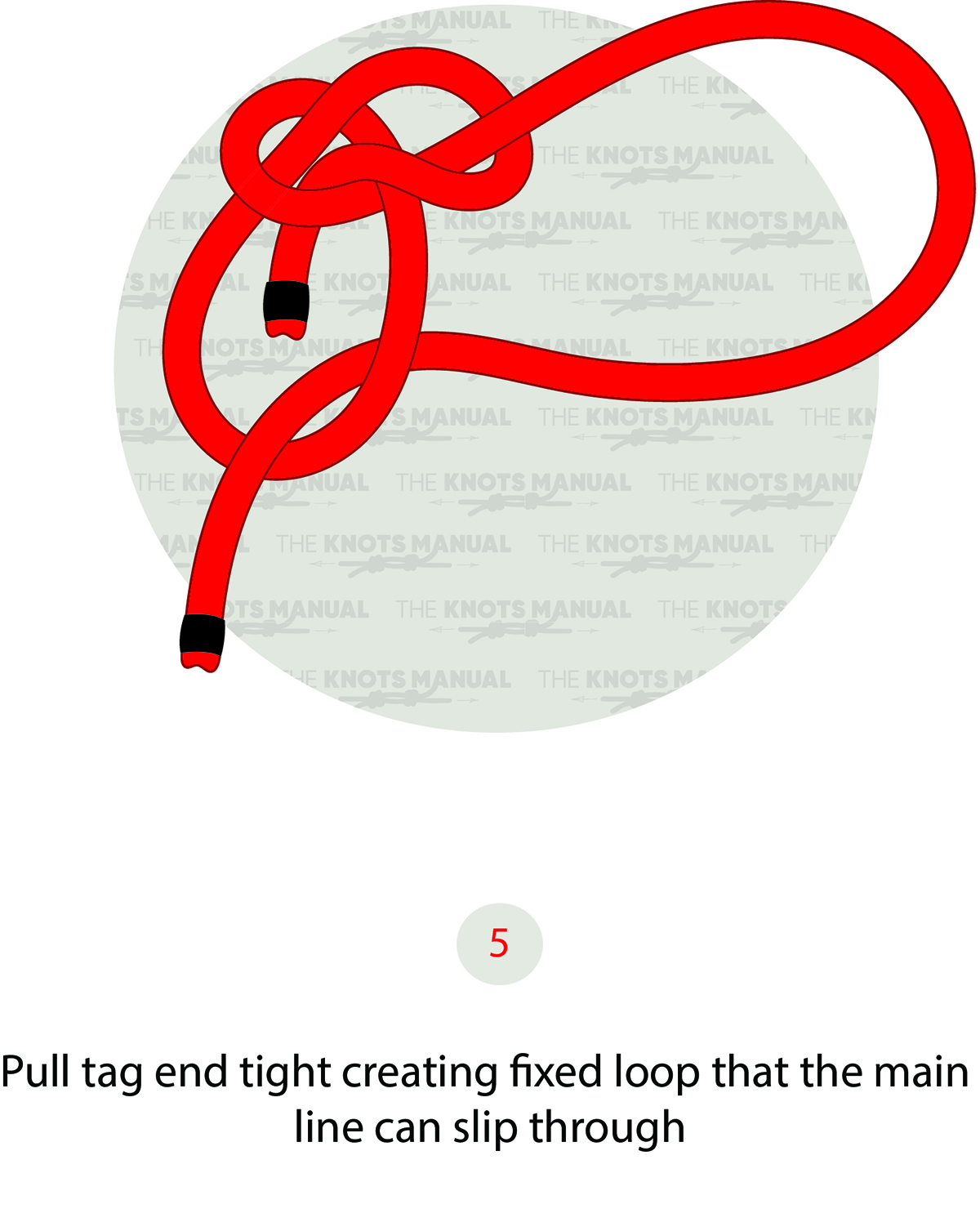
Pull the tag end tight to secure the knot.
